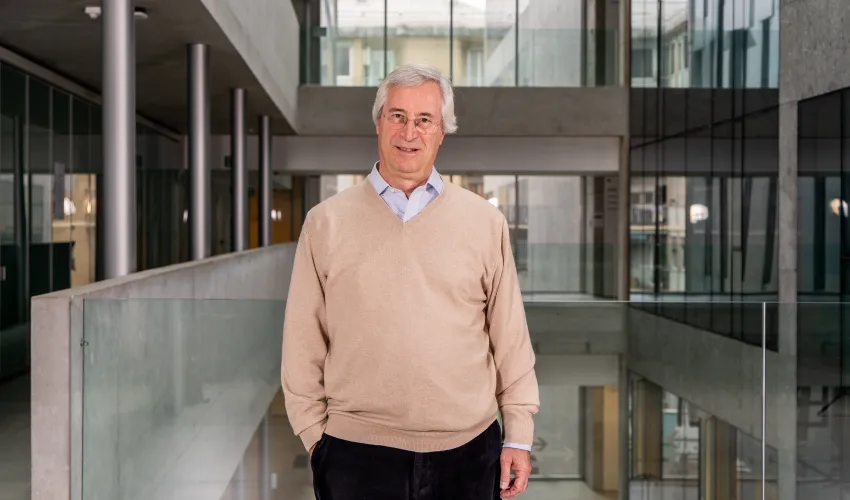
2023 OUTLOOK
The exorbitant increase in gas and electricity prices over the last year has brought a specialist topic at the center of political debate, as households and firms are affected in all EU countries.
The increase in the price of gas began in the summer of 2021, driven by growth in Asian demand, first economic region to recover from the recession caused by the pandemic. In those months of autumn 2021, a second component was not identified with due alarm, linked to a restriction in exports from Russia to Europe. The contagion effect from the price of gas to that of electricity was already felt in the bills of Italians at that stage and led to the first measures by the Draghi government to contain the impact on the most exposed households and industries. These early signs then intensified with the Russian invasion of Ukraine, European sanctions, and the escalation of geopolitical tensions worldwide. On European markets, the price of gas has increased tenfold compared to the spring of 2021, peaking over €300 per MWh last September. In fact, gas has become the main weapon of the counter-sanctions orchestrated by Putin, with a progressive shrinking of supply, manipulation of the TTF spot market where the daily price of gas is formed, and the threat of a complete interruption in gas deliveries.
If this is recent history that we have all experienced, it is worth asking what are the underlying elements that have guided it and what prospects we can imagine for the future. The starting point lies in Europe's strong dependence on Russian imports, 150 billion cubic meters per year, with over 50 going to Germany and about 30 to Italy. The construction of international transport infrastructures and the signing of multi-year contracts with reciprocal obligations between seller and buyer have represented since the Cold War a channel of relations and interdependence between Europe and Russia, which has always guaranteed stability and security of supplies even in the phases of highest tension between the Western and the Soviet bloc.
The rude awakening with the invasion of Ukraine made us understand how a hitherto unimaginable fact, the choice of a global rupture of relations between Russia and Western countries, transformed a solution that strengthened the economic ties between these two spheres into a lever, at least in the short term, for blackmailing Europe and weaken its ability to react to Russia's aggression against Ukraine.
The increase in the price of gas has followed two parallel paths. On the one hand, already in the second half of 2021 there was excess demand in the European market, with economies rebounding from Covid with significant growth rates, together with a progressive contraction of supplies from Russia. This factor, much more than purported speculation, explains the strong and progressive increases recorded on the spot markets where gas contracts are traded, such as the Dutch TTF. These markets, born out of liberalization to facilitate the management and balancing of the portfolios of the many operators that have arisen in the last fifteen years, however, deal with a minor share of the total supply of gas, largely still entrusted to multi-year contracts for gas supplied via pipeline. Precisely because spot markets are relatively less liquid, they are easily subject to manipulation of those who, for example by restricting offers or foreshadowing disruption in supply, can drive the price up. The growing tendency to tie long-term contracts to the price of spot markets has led to price peaks in the TTF to be also transferred to the prices of pipeline contracts.
European governments, with the Italian one among the most determined, immediately felt the need for an incisive and coordinated intervention. However, policymakers had to take into account there are many constraints that cannot be circumvented in the short term. The idea of ​​a price cap applied to gas purchases from Russia appeared to many countries to be the most difficult to implement, due to the situation of de facto belligerence between buyer, the European Union, and seller, Russia, which makes the signing of an agreement to cap the price implausible. Temporary measures containing short-term spikes on spot markets have been recently approved but are more limited in scope. Given the impossibility of directly containing the price of Russian imported gas, the path followed was those of a partial replacement of supplies by increasing imports from other gas-producing countries.
With all the asymmetries that this solution entails, with countries such as Italy, relatively diversified (importing gas from Algeria, Libya, Azerbaijan, and having LNG terminals) and countries heavily dependent on Russian gas, such as Germany. A second solution is to create a wedge between the high cost of raw materials and the costs that end users, families and businesses, have to bear, by using public subsidies in various forms. Also in this case, there have been strong asymmetries, with countries with public budgets that are capable of financing robust support and countries where budgetary constraints prevent to do so. Asymmetries which, when the energy costs of companies are subsidized, turn into potential distortions of the internal market and into state aid. Lastly, demand rationing schemes have been envisaged for households and businesses, a completely new topic that is likely to have non-trivial implementation problems.
Finally, the transmission of the high price of gas to electricity bills, a source of a further generalized inflationary push, has been addressed with different measures among European countries, through taxation of extra-profits from renewables to finance subsidies to end users (Italy) or subsidies for the purchase of the fossil fuel going to gas-fired power plants (Spain and Portugal).
So what can we expect in the coming months? Prices on the Dutch TTF market have shown a tendency obey economic fundamentals rather than the will of phantom speculators, and the price of gas has dropped, today to around €100 per MWh, in response to a contraction in demand, driven by gas stocks that have been replenished, mild weather and a slowdown in final demand. It will therefore be necessary to look at the underlying dynamics of gas supply and demand for the foreseeable future.
The progressive replacement of Russian gas imports with supplies from other producers, provided that Gazprom does not halt abruptly the flow of gas, will in any case involve the transition from a historically stable and low-cost source such as Russia to supplies from countries suddenly inundated by demand, and ways of provisioning, such as transport via gas tankers, which is structurally more expensive. This means it is reasonable to assume that gas and electricity prices will remain at higher levels than in recent years for not a short time. The persistently high cost of energy will promote a rationalization of consumption and a reduction in demand in the medium term. Similarly, the high cost of producing energy from fossil sources will create the conditions for an acceleration in the energy transition towards renewables.